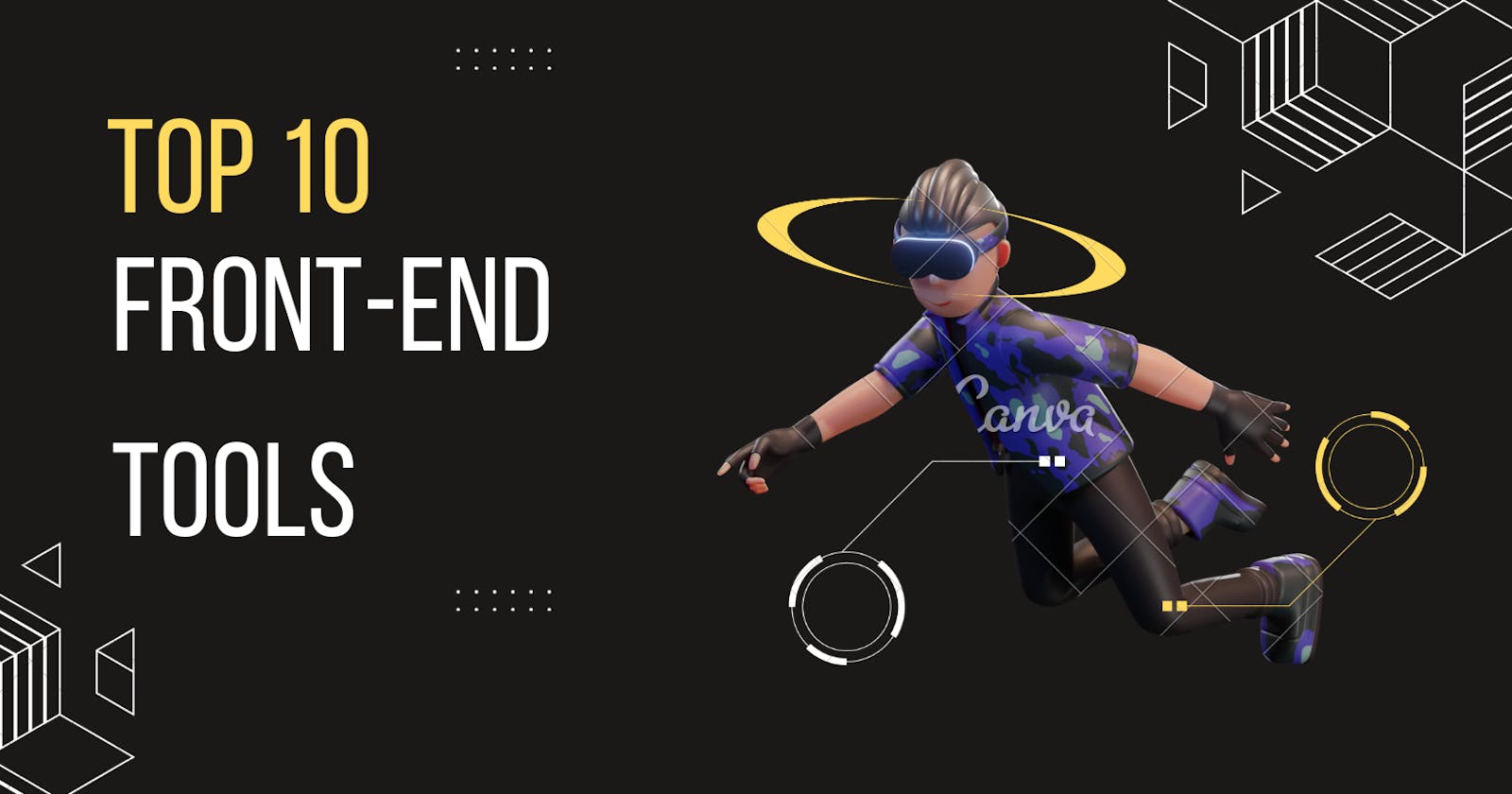As technology advances, the demand for front-end developers is on the rise. Front-end developers are responsible for creating user interfaces, which means they must be familiar with various tools and technologies. If you're an aspiring front-end developer, there are ten essential tools you should know. In this blog post, we'll discuss each device and provide code snippets where necessary.
HTML:
HTML stands for Hypertext Markup Language. It is the foundation of every website and is responsible for the structure of web pages. Here's an example of HTML code:
<!DOCTYPE html>
<html>
<head>
<title>My Website</title>
</head>
<body>
<h1>Welcome to my website</h1>
<p>This is my first paragraph.</p>
</body>
</html>
CSS:
CSS stands for Cascading Style Sheets. It is used to style web pages and make them look visually appealing. Here's an example of CSS code:
body {
background-color: #f0f0f0;
font-family: Arial, sans-serif;
}
h1 {
color: #333;
font-size: 36px;
}
p {
color: #666;
font-size: 16px;
}
JavaScript:
JavaScript is a programming language used to add interactivity to web pages. Here's an example of JavaScript code:
let button = document.querySelector('button');
button.addEventListener('click', function() {
alert('Hello, world!');
});
jQuery:
jQuery is a JavaScript library that simplifies HTML document traversing, event handling, and animating. Here's an example of jQuery code:
$('button').click(function() {
alert('Hello, world!');
});
React:
React is a JavaScript library used for building user interfaces. Here's an example of React code:
import React from 'react';
function App() {
return (
<div>
<h1>Welcome to my website</h1>
<p>This is my first paragraph.</p>
</div>
);
}
export default App;
Bootstrap:
Bootstrap is a popular CSS framework used for building responsive websites. It offers a range of CSS and JavaScript components, such as buttons, navigation bars, forms, and models, that can be easily customized to fit your design needs. Here's an example of Bootstrap code:
<div class="container">
<h1>Welcome to my website</h1>
<p>This is my first paragraph.</p>
</div>
Sass:
Sass is a CSS preprocessor that extends the capabilities of CSS. It allows you to use variables, nesting, mixins, and other programming constructs to write more maintainable and scalable CSS code. Here's an example of Sass code:
$primary-color: #333;
body {
background-color: #f0f0f0;
font-family: Arial, sans-serif;
h1 {
color: $primary-color;
font-size: 36px;
}
p {
color: #666;
font-size: 16px;
}
}
Git:
Git is a version control system used to track changes in code. It allows you to collaborate with other developers, revert changes, and manage code branches. Here's an example of Git code:
git add .
git commit -m "Added new feature"
git push
Gulp:
Gulp is a task runner used to automate repetitive tasks in the development workflow. It allows you to define and execute tasks such as compiling Sass code, optimizing images, and minifying JavaScript files. Here's an example of a Gulp task:
gulp.task('sass', function() {
return gulp.src('scss/*.scss')
.pipe(sass())
.pipe(gulp.dest('css'));
});
Webpack:
Webpack is a module bundler used to bundle JavaScript files for the web. It allows you to manage your project's dependencies, optimize code for production, and use features such as hot module replacement. Here's an example of a Webpack configuration file:
module.exports = {
entry: './src/index.js',
output: {
filename: 'bundle.js',
path: __dirname + '/dist'
},
module: {
rules: [
{
test: /\.js$/,
exclude: /(node_modules|bower_components)/,
use: {
loader: 'babel-loader',
options: {
presets: ['@babel/preset-env']
}
}
}
]
}
};
Conclusion
In conclusion, these ten tools are essential for every aspiring front-end developer to know. With the help of HTML, CSS, JavaScript, jQuery, React, Bootstrap, Sass, Git, Gulp, and Webpack, you can build high-quality user interfaces, manage your codebase efficiently, and automate repetitive tasks in your development workflow.
